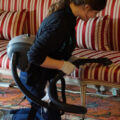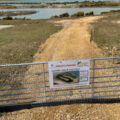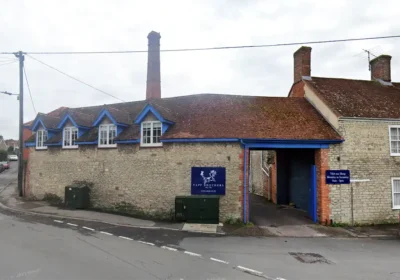Colonel John Nicholas Blashford-Snell CBE is a former British Army officer, explorer and author. He founded Operation Raleigh and the Scientific Exploration Society. Here, from his ‘base camp’ in Motcombe, he recounts a childhood adventure
by John Blashford-Snell
My first expedition was to a sluggish, tree-lined stream known as the Canny Brook that ran west-east behind the Baggally meadows, filled with old tin cans, broken prams, cycle frames and cider bottles.
But to the young of Hereford’s Holy Trinity Parish in 1944 it might have been the Nile or the Niger.
At our Saturday morning meetings in my father’s vicarage loft the choristers debated the need to investigate this mysterious waterway. There were a great many hazards and dangers. Apart from a colossal, ill-tempered bull that roamed the fields flanking the brook, enormous adders were known to inhabit the long grass – Mrs Tomkins’ cat had died in awful agony after a tussle with one of these serpents – and the impenetrable brambles were thickly sown with giant stinging nettles and rusty barbed wire.
Now that the likelihood of the Hun invading Hereford had receded, we needed to face a new challenge and resolved to launch an expedition to explore the Canny Brook. Clearly a boat would be needed, and provisions, plus weapons for defence against hostile gangs of scrumpers known to inhabit the lower reaches.
So it was in September of that year that 10 intrepid boys and girls of the church choir lugged a home-made punt across the fields. Old Mrs White had given us a pot of strawberry jam and we took half a loaf of bread, margarine and two bottles of Mr Meredith’s special ginger pop. My mother added a bag of sweet pears and a hard-boiled egg.
The boys made new bows from the churchyard yew and our catapults used some rubber found beneath the counter of the corner shop. Several female members of the team had generously offered to cut the elastic from their knickers but fortunately this did not prove necessary. A long spear was fashioned from a clothes-line prop and held in reserve in case we were attacked by the crocodile that Colin was certain lived in the bushes.
At last, all was ready, and the expedition moved off. Stores and equipment, plus the smaller members, went on the punt, now flying the church’s flag of St George. The rest, the warriors, marched alongside on the banks singing ‘Onward Christian Soldiers’. The vicar’s pet monkey, a ferocious beast named Jacko, came too, to act as a scout, leaping from tree to tree ahead of the column. When farmer Raymond’s ferocious bull appeared, he was driven off by my mother’s spaniel, aptly named Crackers, which hurled itself with great courage at the snorting monster. The problem was that Crackers was almost blind and, having savaged a couple of fence posts, fell into the stream whence he was rescued by the punt crew.
So our voyage of discovery continued gathering important scientific data on the fauna and flora, the state of the blackberry crop and the location of the best eating apples. Derek caught a huge minnow which was kept alive in a jar of water and would be cooked later, back at base camp. Ray almost captured a newt, but its tail came off in his hand. “Never mind, I don’t like newts anyway,” muttered his fervent admirer, pimply Pam.
Jacko alerted us with loud chattering to the scrumpers, lying in ambush in the marsh north of King’s Acre, but the cowardly lot made a poor showing when our volley of arrows and fire-hardened conkers from our catapult fell among them. With a cry of ‘Remember Breinton’ – a previous engagement when we had thrashed a rival choir – our warriors charged into the enemy, fists flying, scattering them over the allotments.
One luckless oaf was cornered by Jacko, seized and dragged screaming back to be debagged and keel-hauled beneath the punt by the girls.
After one dipping he sang like Miss Gibson’s canary, telling us the exact strength of his gang, the location of their den and, most importantly, the whereabouts of a patch of edible horse mushrooms the size of dinner plates. Some wanted to take him back to Holy Trinity as a slave, but he refused to walk, and being dripping wet was not welcome in the boat, so we released the wretch with a stern warning inscribed on his forehead in indelible pencil: ‘Canny Brook is Holy Trinity land, trespassers beware’.
Alas at this point our faithful craft became waterlogged and had to be abandoned but it was a happy band of choristers that trudged back to the vicarage with a load of looted apples, a wet dog, a minnow and a posy of wildflowers for my grandmother. “We went all the way to White Cross to get these for you, Granny,” I fibbed. “What sweet, thoughtful children,” the old lady smiled.
John Blashford-Snell’s recently published book From Utmost East to Utmost West is available priced £19, including postage – to order your copy, email jenny@ses-explore.org.










Leave a Reply